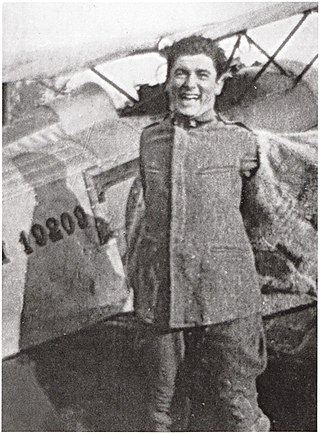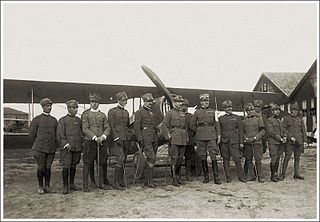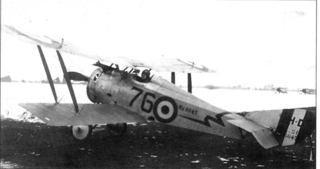
Sottotenente Michele Allasia was a World War I fighter ace credited with five aerial victories.

Maggiore Sebastiano Bedendo was a World War I flying ace credited with five aerial victories. After completing his education postwar, he rejoined Italian military aviation. He set several world aviation flying records with a Nuvoli N.5 monoplane before dying in an air crash.
CapitanoGuido Masiero was a World War I flying ace credited with five confirmed and ten unconfirmed aerial victories. He was a prewar lancer who used his civilian engineering expertise to wrangle a transfer to aviation duty.
Tenente ColonnelloGiorgio Michetti was a World War I flying ace credited with five aerial victories.
Tenente-colonnello Alessandro Resch was an Italian World War I flying ace credited with five confirmed aerial victories. After surviving World War I, he would become a pioneering airline captain, flying 500,000 miles between 1928 and 1935. He would return to the Italian Air Force as a major in 1935, rising to tenente-colonnello by 1939. His participation in World War II is unknown.

Sergente Maggiore Aldo Bocchese was a World War I flying ace credited with six aerial victories.

Tenente ColonnelloAlessandro Buzio was an Italian World War I flying ace credited with six aerial victories, four of them shared.
Sergente MaggioreGuglielmo Fornagiari was an Italian World War I flying ace credited with six aerial victories.

Sergente Cesare Magistrini began his lengthy aviation career as a World War I flying ace credited with six confirmed and four unconfirmed aerial victories.

Tenente Luigi Olivi (1894–1917) was an Italian World War I flying ace credited with six aerial victories. He won two awards of the Silver Medal for Military Valor and was killed in action.
Sergente Cosimo Rizzotto (1893–1963) was a World War I flying ace credited with six aerial victories.
Sergente Romolo Ticconi was a World War I flying ace credited with six aerial victories.

TenenteMario Fucini was a World War I flying ace who claimed credit for 13 aerial victories during the war; seven of these were confirmed in 1919.
Tenente Gastone Novelli was a World War I flying ace credited with eight aerial victories.

Tenente colonnelloAlvaro Leonardi was a World War I Sottotenente from Italy and a flying ace credited with eight aerial victories.
Capitano Antonio Reali was an Italian World War I flying ace credited with eleven confirmed aerial victories, and 22 unconfirmed victories. He served in the Regia Aeronautica Reserves from 1923 to about 1940.
Generale di Brigata AereaMarziale Cerutti began his military career in Field Artillery, but became a flying ace after his transfer to aviation service. He would be extensively decorated for valour, and credited with 17 confirmed aerial victories. He would also remain in Italy's aviation branch after World War I, becoming an officer of increasing importance. He rose through the ranks between the World Wars to become a Wing Commander with the rank of colonnello. During World War II, he served as chief of staff in Italy's North African Headquarters before being placed in command of Italy's air transport command. When Italy declared its armistice on 9 September 1943, Cerutti chose to continue service to Benito Mussolini. This resulted in his suspension from military duties at the end of World War II. He died in a motorcycle accident on 26 May 1946 while awaiting a final determination of his military status.
SergenteGiovanni Nicelli was an Italian World War I flying ace. He was credited with eight or nine confirmed aerial victories, and died in service to his nation on 5 May 1918.
Flaminio Avet was a World War I flying ace credited with eight aerial victories. Although born in Nice, France, he served in the Italian military as Italy entered World War I. After a transfer from Lancers to aviation, he trained as a pilot. He began his aerial combat career on 27 November 1918, and would stake a dozen victory claims, eight of which would be verified. He ended the war having won the Silver Medal for Military Valor three times. He returned to Nice postwar, and died there on 21 August 1928.

LieutenantGiovanni 'Giannino' Ancillotto was an Italian World War I flying ace credited with 11 confirmed aerial victories. Rather unusually, he served solely with aviation while he was in the military, beginning in the lowest rank. Among his aerial victories as a fighter pilot were three over enemy observation balloons right after the Battle of Caporetto. As an example of the hazards of balloon busting, on 5 December 1917 Ancillotto returned to base with singed swatches of the third balloon's fabric adhering to his damaged fighter plane.









